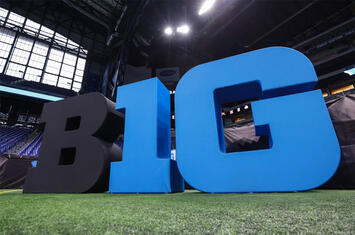
It appears my alma mater will fall short of pre-season expectations in football. So I’ve pretty much already accepted the likelihood that the Wisconsin Badgers will disappoint their fans on the gridiron for at least the second year in a row.
But I’ve far from made up my mind about another aspect of the Big Ten: whether the conference’s planned expansion into one of the two biggest leagues in all the land, along with the Southeastern Conference, is good or bad for Flyover Country.
The trigger for the conference’s planned expansion to 16 teams from the current 14 was, of course, the news several weeks ago that UCLA and USC would be bolting the Pac-12 to join the Big Ten in 2024 for football at least.
And the linchpin for that dramatic announcement was anticipation of what would come soon after: news that the Big Ten struck a massive new, seven-year contract with the TV networks that was said to be worth up to about $7.5 billion, about a doubling of its current deals.
Certainly, this will be a dream for corporate sponsors as well as broadcasters, university coffers and many college athletes. “It’s hard to look into a crystal ball, but it clearly will open up more opportunities for marketers,” Allyson Witherspoon, Nissan’s chief marketing officer, told me.
Various pundits’ opinions have ranged from that of one USA Today columnist, who moaned that “college sports has become just another corporate proxy war,” to that of a Detroit sports reporter who insisted “the game day experience around the [Big Ten] conference will more or less stay the same.”
Flyover Country 1, Coasts 0
I started what I’m deciding about all of this with the pretty much visceral conclusion that it’s good when the heartland can beat the coasts at anything. In this case, the two conferences that have emerged as the remaining true “powerhouses” in collegiate sports have their homes, built their legacies and traditions, and continue to be based in Flyover Country.
I mean, this development would be akin to — what? The epicenter of the entertainment business moving to Nashville from Hollywood? Or Chicago taking over as the global financial heavyweight from New York?
The rise of the Big Ten and the SEC to dominate the coasts in collegiate sports isn’t something on that scale, but it certainly ranks as a rare occasion when the center of the country vanquishes the coasts in a significant entertainment and cultural milieu.
It’s kind of like enjoying the last Super Bowl where the combatants were both from Flyover Country, which I count as Super Bowl LV that featured the Tampa Bay Buccaneers defeating the Kansas City Chiefs in 2021. (Before that, the last Big Game that didn’t include at least one team from the coasts was my personal favorite, Super Bowl LXV in 2011, when the Green Bay Packers defeated the Pittsburgh Steelers.) Only, the tectonic shifts in college sports are much more consequential than the lineup in any Super Bowl.
Read the rest of this piece at Flyover Coalition.
Dale Buss is founder and executive director of The Flyover Coalition, a not-for-profit organization aimed at helping revitalize and promote the economy, companies and people of the region between the Appalachians and Rockies, the Gulf Coast and the Great Lakes. He is a long-time author, journalist, and magazine and newspaper editor, and contributor to Chief Executive, Forbes, the Wall Street Journal, the New York Times and many other publications. Buss is a Wisconsin native who lives in Michigan and has also lived in Texas, Pennsylvania and Florida.
Photo: courtesy Flyover Coalition.












